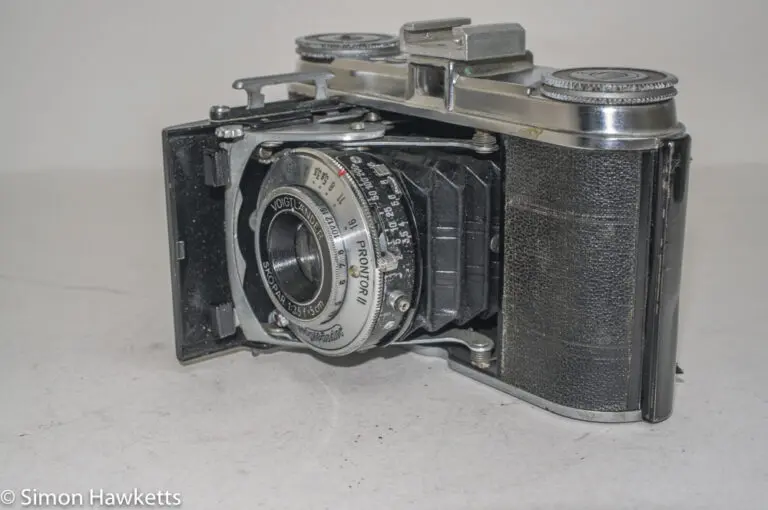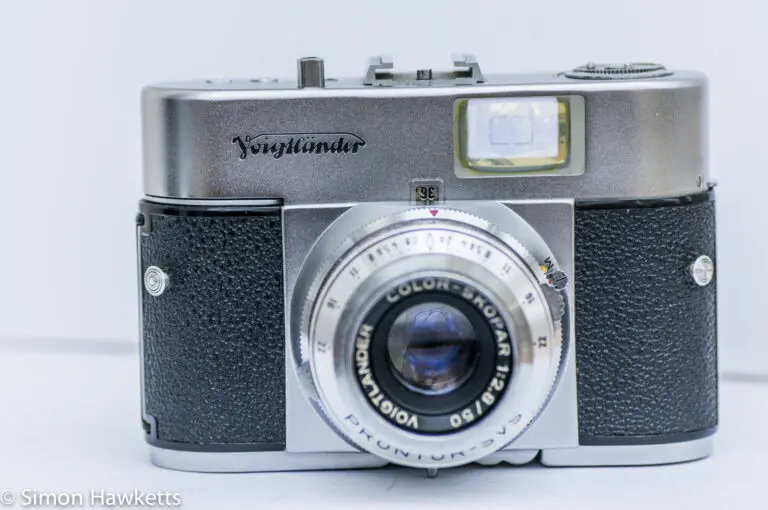A Fine Voigtlander Vito II 35 mm folding camera
This article looks at a nice little Voigtlander Vito II 35 mm folding camera that I recently added to my vintage camera collection.
My Voigtlander Vito II camera
This camera is the first vintage camera I’ve bought for quite a while1, having been away from the ‘camera collector’ side of my persona for a long time. There are various reasons for that, many changes to our home over the last 18 months (an extension built, and our garage converted into a bedroom for my mother-in-law), our Son going off to University, our Daughter starting college, landscaping and building a log cabin in the garden to name just a few.
Over the last few weeks however, I’ve felt my interest in vintage cameras starting to rise again, so I’ve been looking at eBay and some of my old saved searches and decided to take the plunge and make a few purchases.
One thing that struck me almost straight away when I started looking at eBay again is the change in prices for vintage cameras over the last couple of years. It seems they have become quite a sought after commodity, and whereas I would normally budget up to £15 for a camera, I find many quite simple cameras have starting prices from £25 to £30.
Although that is disappointing from a buyer’s perspective, I’ve actually decided that in order to continue collecting, I’m going to need to sell some of my less interesting models to find the space to keep the others, so hopefully it will balance out.
So, back to this camera.
I bought it because Voigtlander always made great quality cameras, and I guessed that this unit would likely be in working order. The seller didn’t sell it as guaranteed working, but it looked reasonable in the photos, and I took a chance on it.
When it turned up, very well packaged a couple of days later, I found that it is a nice, clean and well-preserved copy of this simple viewfinder, folding camera. There is one mechanical issue that I can see – the shutter slow speeds are failing and keeping the shutter open for very long times, but that is a relatively easy thing to fix. The shutter is a Compur Rapid, and I have a reasonable experience of servicing that model, so it should be simple to do.
Other than that small issue, the camera looks to be in good condition and only requires the normal clean and lubrication that any 70-year-old camera would need.
Included in the package with the camera was a Voigtlander leather case, which I’ll need to put a bit of work into to restore, and a flash accessory shoe which was clipped over the viewfinder.
Voigtlander Vito II Pictures.
Here are some images of the Voigtlander Vito II to highlight some of its main features and to illustrate the description that follows.
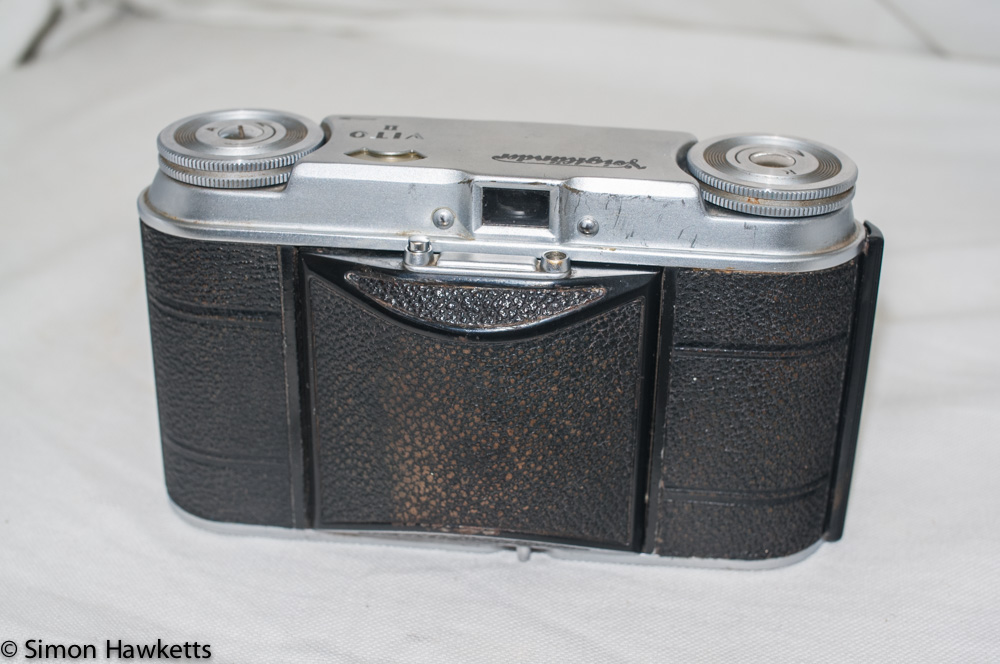
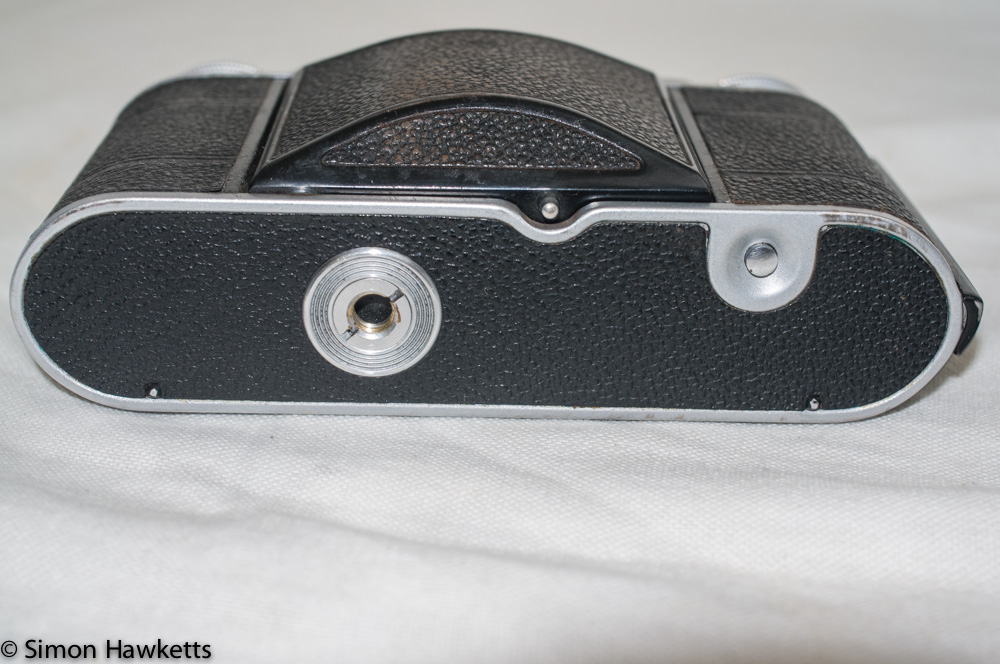
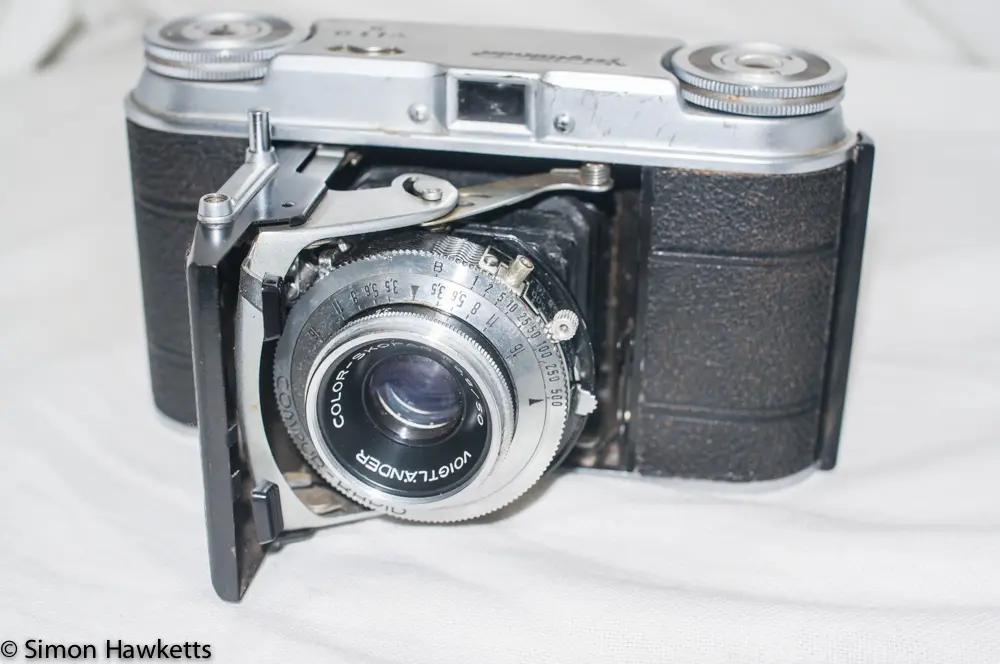
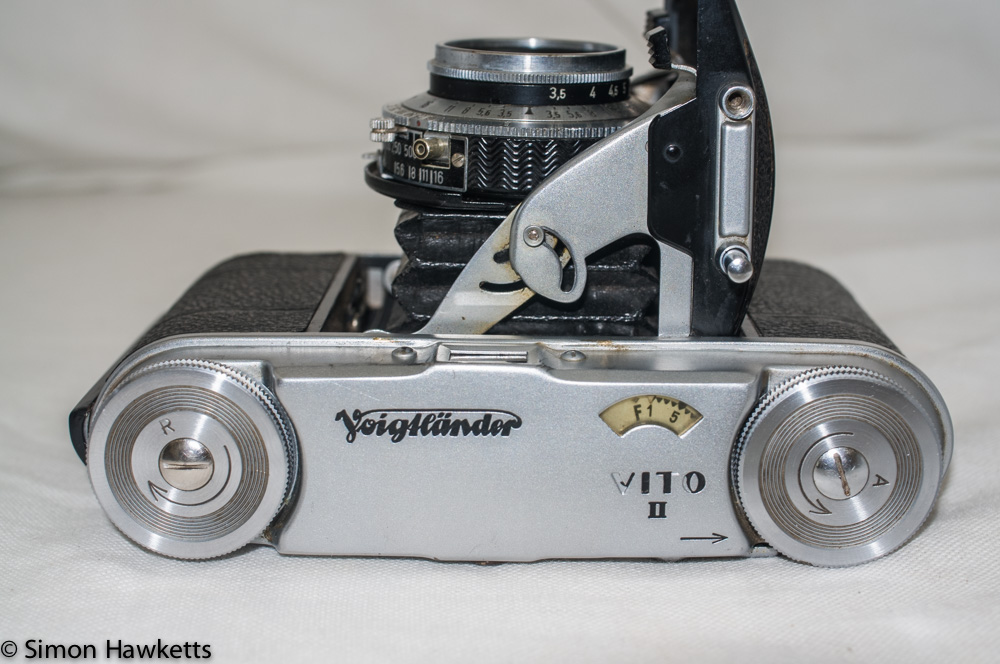
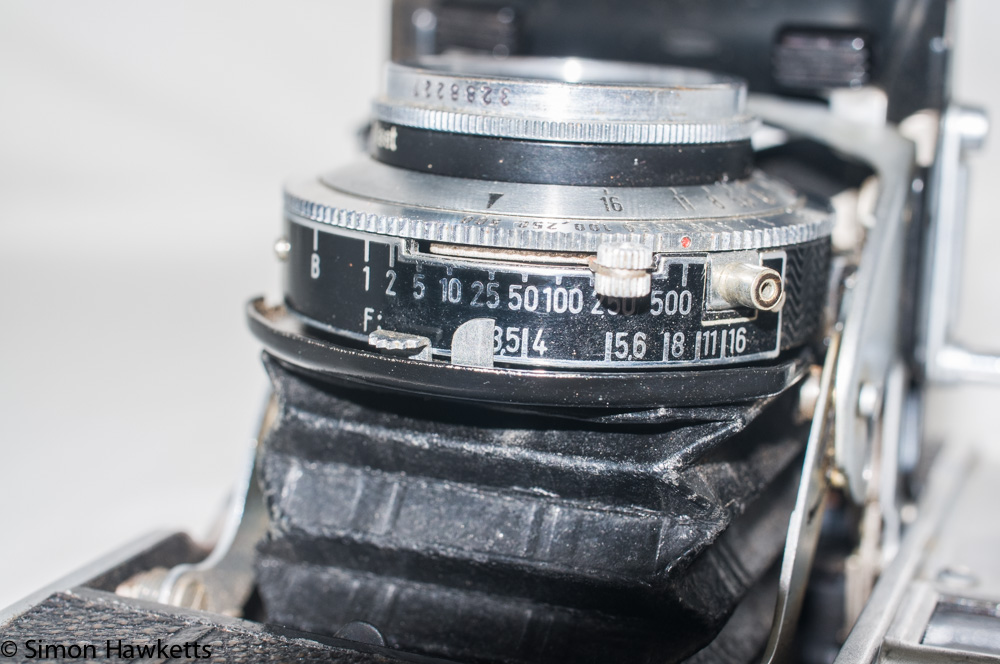
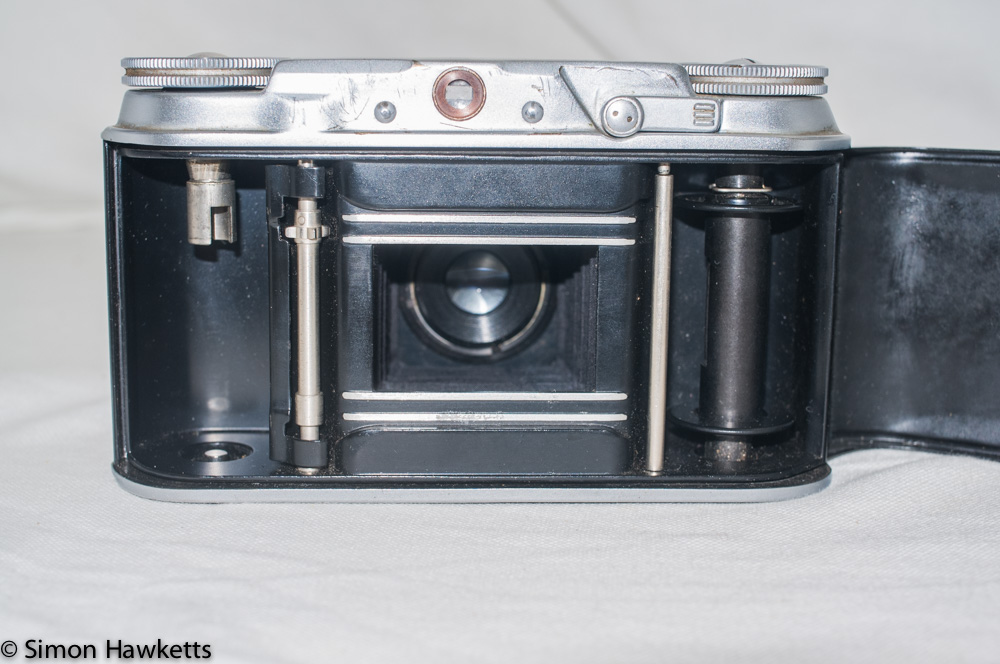
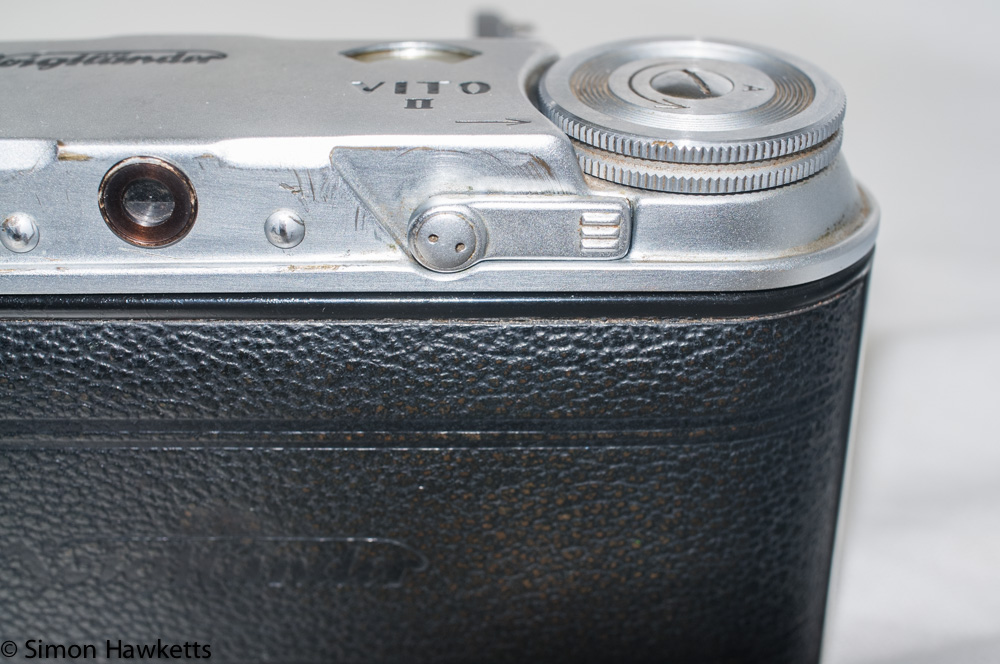
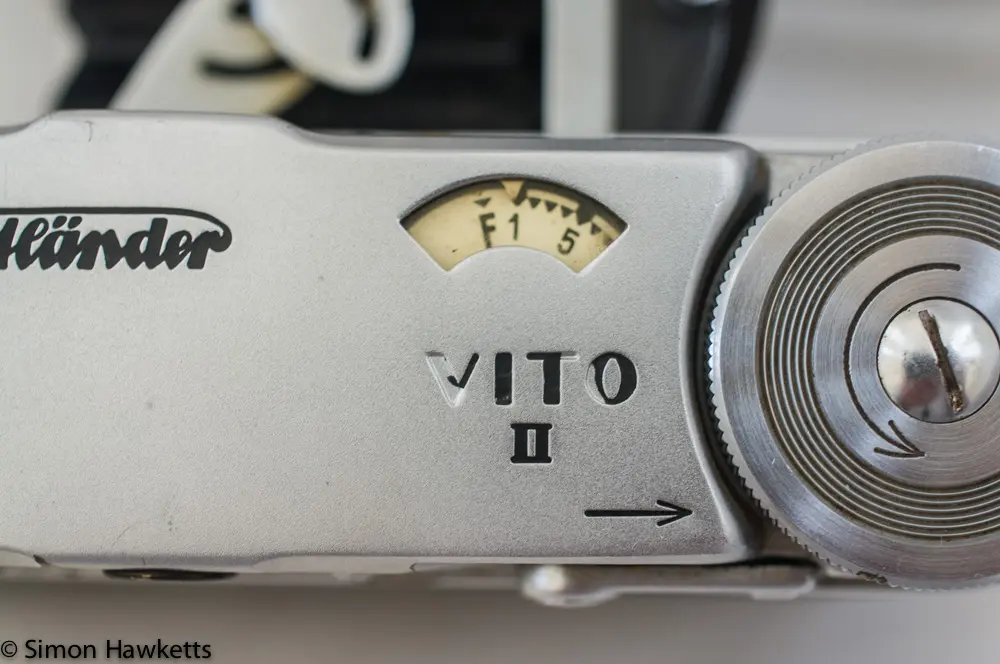
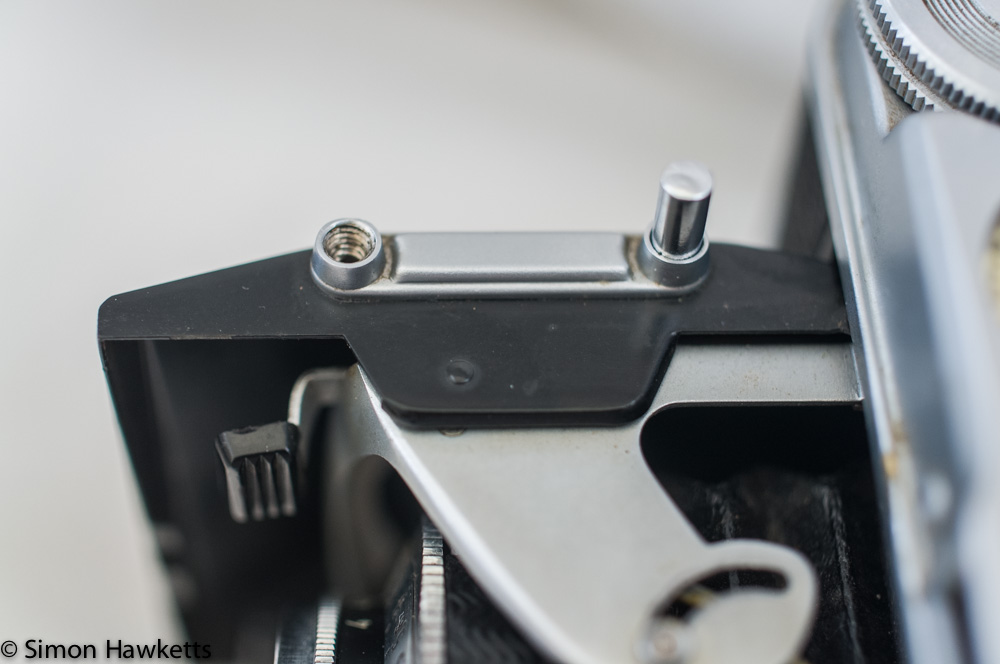
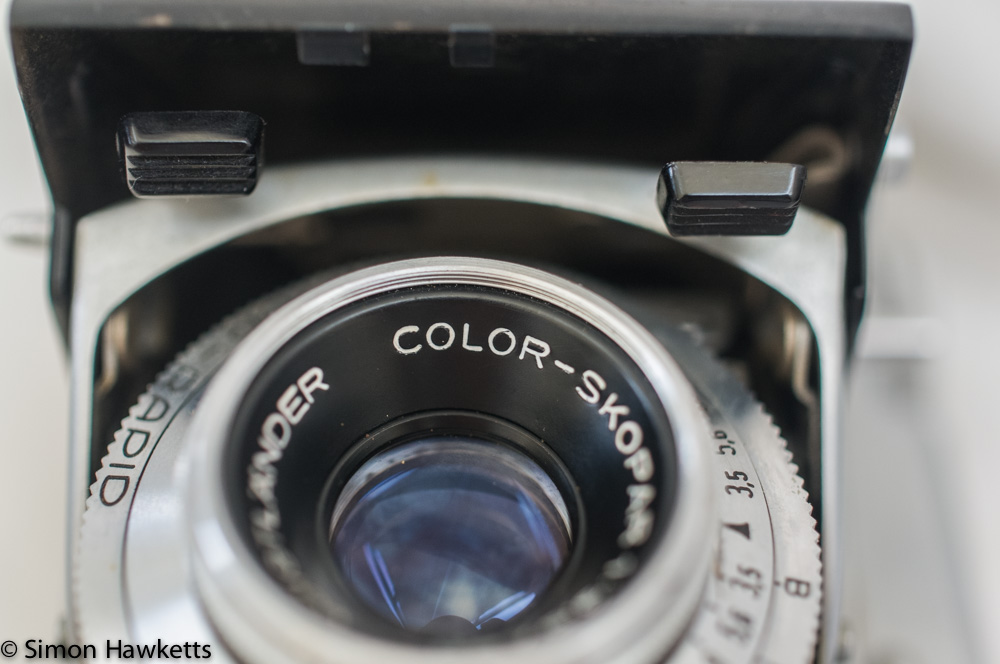
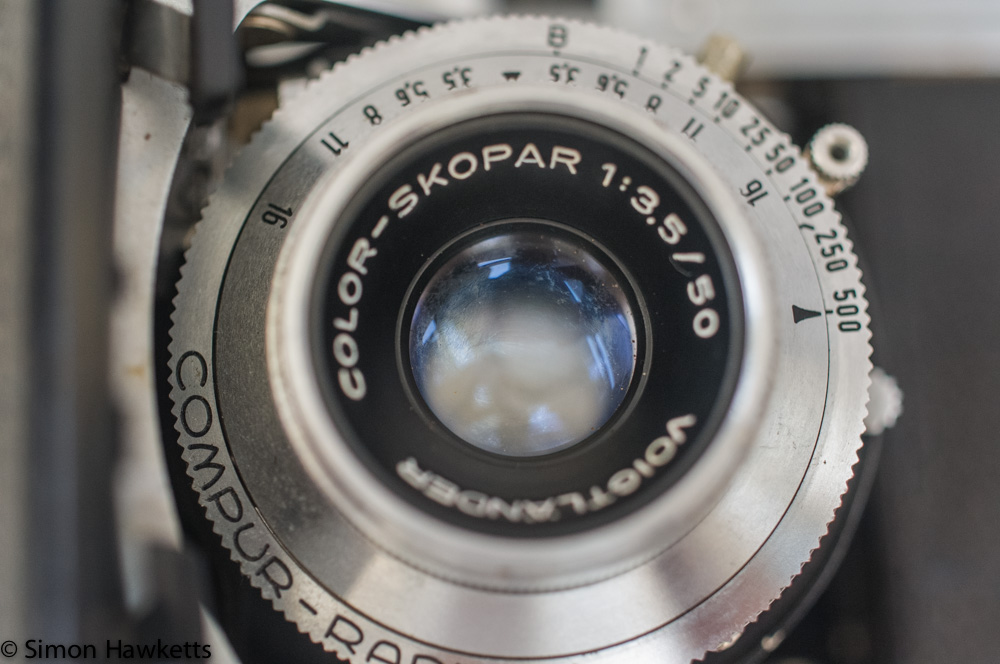
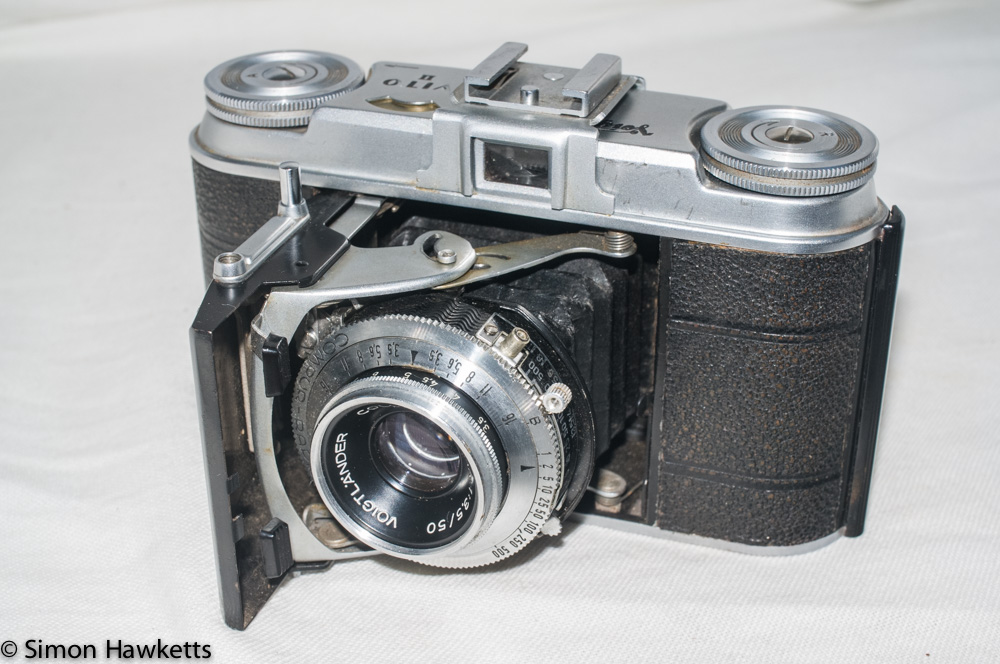
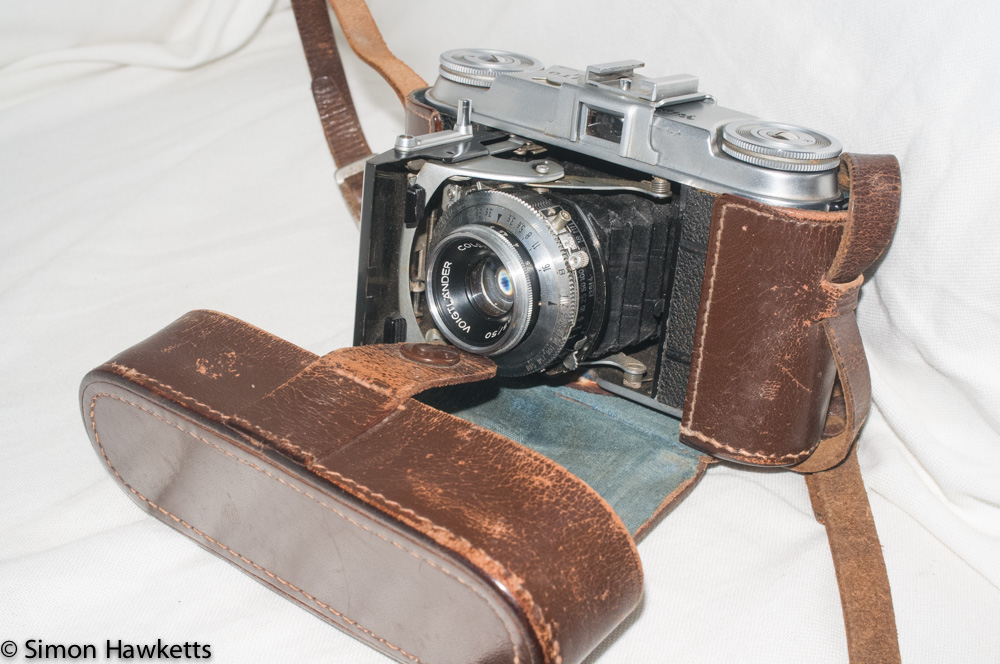
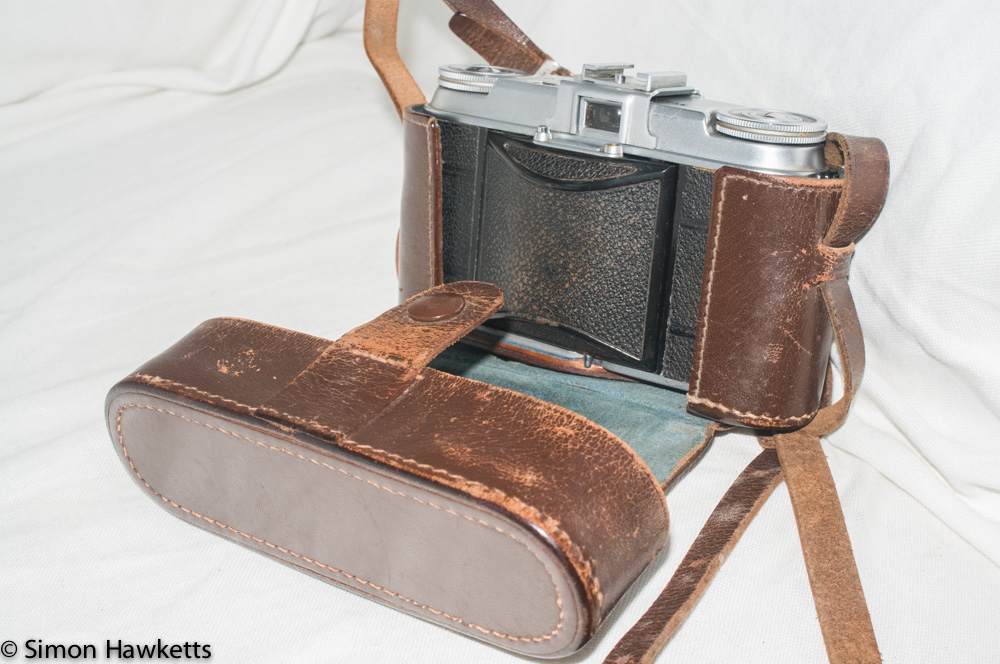
Voigtlander Vito II Description
As the title of this article says, the Vito II is a folding camera, which is a design which allows the lens and shutter to be folded into the camera body thereby allowing the whole camera to be much thinner than it would be otherwise and also offer a level of protection to the lens and shutter.
The release button for the front door, which the shutter is folded away behind, is on the bottom of the camera body underneath the take-up spool. On my camera, pressing this button doesn’t make the door pop open, you have to prise it open with a finger nail, but this may be because the door springs are a bit tired. When I take the shutter off to fix the slow speeds, I’ll check this.

When the door is opened to the full extent, it clicks into place and the shutter is held securely at the correct distance from the film plane. The shutter release button is fitted to this door and pops up when the door is fully open. Its position on the front door is actually quite convenient, and it is easier to reach in this position than the more traditional position on the top plate.
The camera is fully manual in its operation. The shutter speed and aperture settings are set with rings on the shutter, and in order to take a picture the shutter needs to be manually cocked using a small leaver, also on the shutter. Although fully manual, there are protections against multiple exposures however, because the shutter release will only press down once the film has been advanced.
The way this multiple exposure protection works is one of the reasons many Voigtlander Vito cameras are assumed to be not working. It’s because the mechanism that controls this is not driven by the film advance winder, but from the film as it moves from the full reel to the take-up spool and passes over the sprockets in the camera. So if there is no film in the camera the shutter can’t be fired and many people assume the camera is broken.
When it comes time to fold the camera back up, there are two latches on the door of the lens compartment which need to be pressed in order to release the door lock and collapse the lens assembly.

On the top of the camera are the controls for advancing the film and a small window which shows the frame counter. This needs to be set when a film is loaded into the camera, and there is a little wheel on the back of the camera top, near the eyepiece, which is accessed by a small protective lever being moved out of the way to do this.
The frame counter is set to count up the number of frames taken, so when a film is loaded the counter is set to the beginning of its travel. There is a small letter F on the dial which is used when the film is loaded, and then the film is advanced until the dial reads 1.
The lever which protects the frame counter setting dial also has another function – it is used to disable the latch which stops you winding the film until a picture has been taken, and there are two times this is useful. First when the camera is loaded it lets you wind the film on enough to make sure the small portion of exposed film is passed over, and secondly the lever allows the film to be wound back into the film canister once all the pictures have been taken.
Other nice features of this little camera are a tripod bush on the bottom plate and three little feet which allow the camera to be stood on a table for support. The version I have doesn’t have a self-timer, but other versions of the camera did have this feature.
Voigtlander Vito II specifications
- Voigtlander Vito II viewfinder, folding camera
- Manufactured between 1949 and 1954 in Germany
- Takes 35 mm film
- Fitted with Compur rapid shutter
- Shutter speeds 1/500 to 1 sec plus B
- Aperture f/3.5 to f/16
- Manual focus to 3.5 feet
- Depth of field scale on shutter
- Fully manual operation
- Voigtlander 50 mm Color-Skopar lens
- Flash sync socket on shutter
- Shutter release and cable release on fold out door
- ‘Count up’ frame counter with manual setting
- Accessory shoe attachment
- Tripod bush and table stand
- Manual available on-line here
- probably about 2 years [↩]
Discover more from Everything Vintage
Subscribe to get the latest posts sent to your email.

